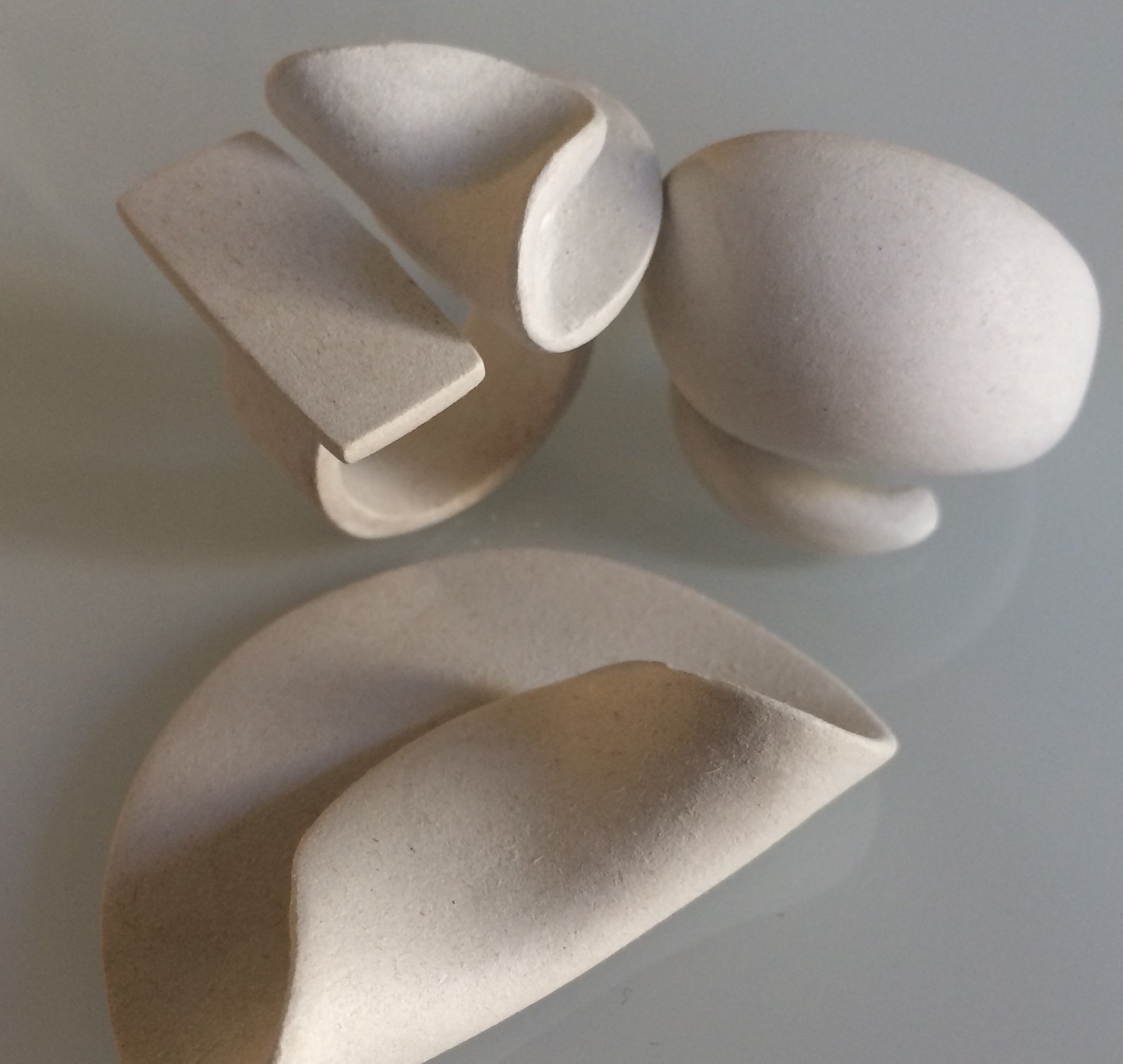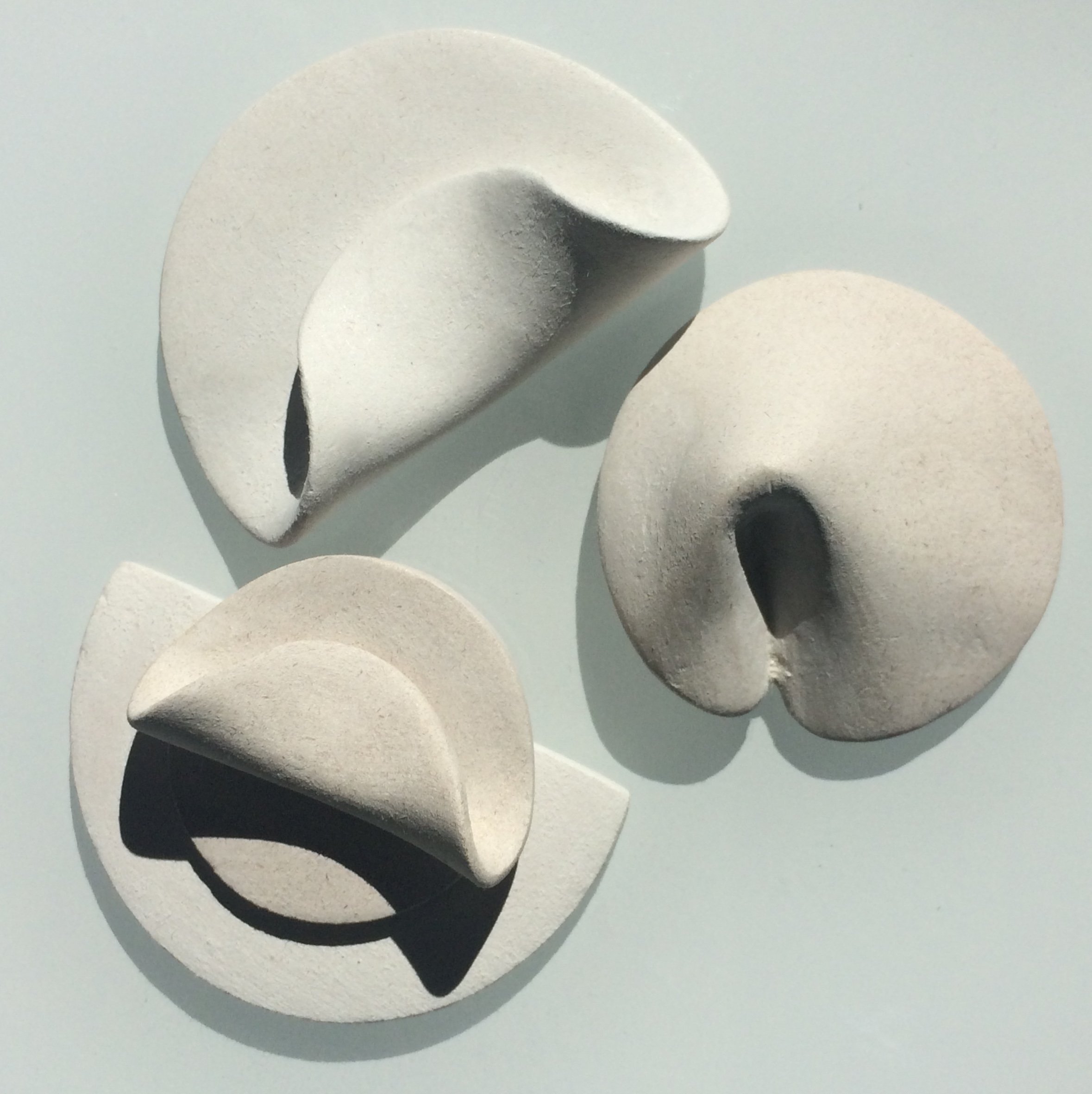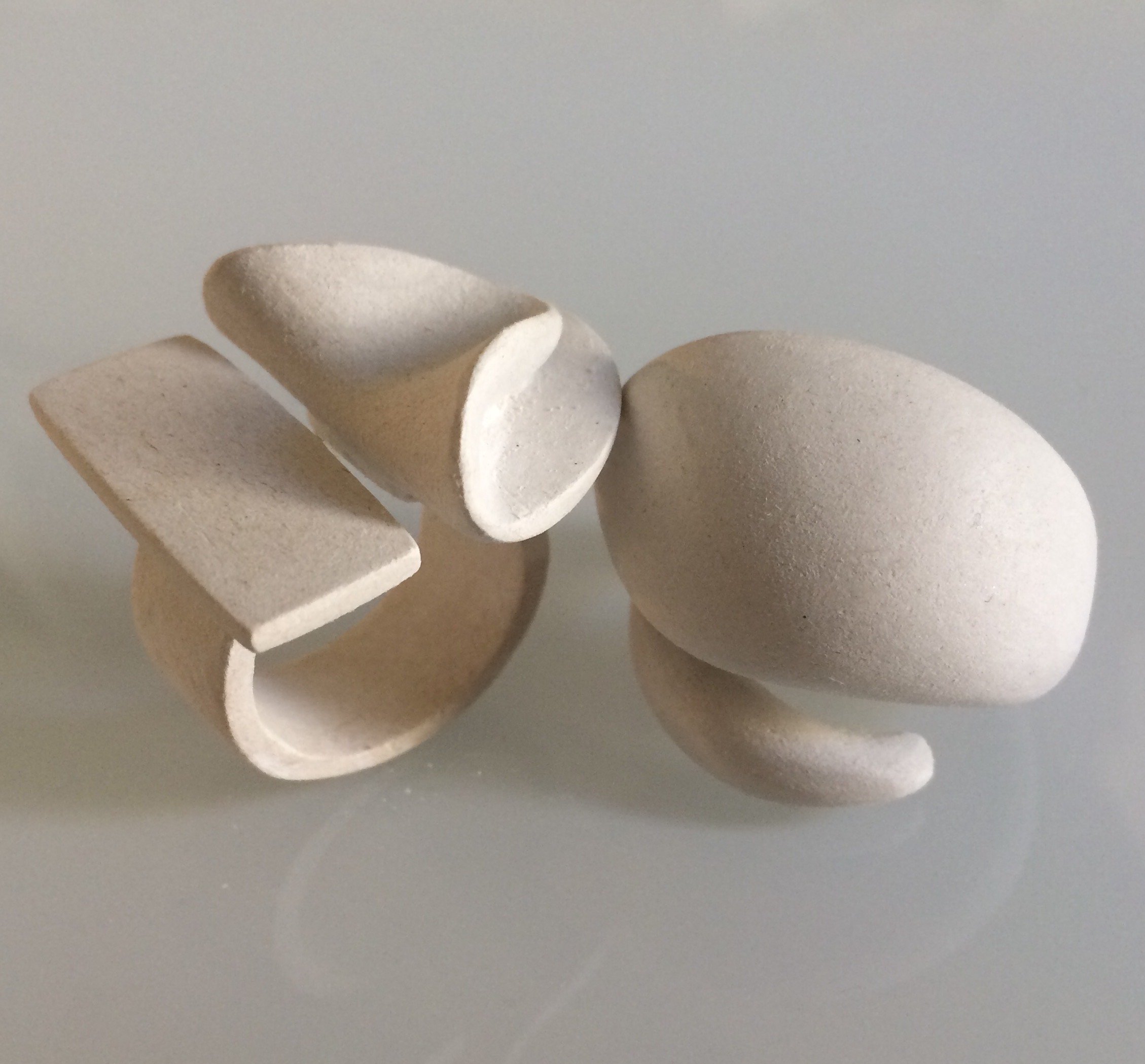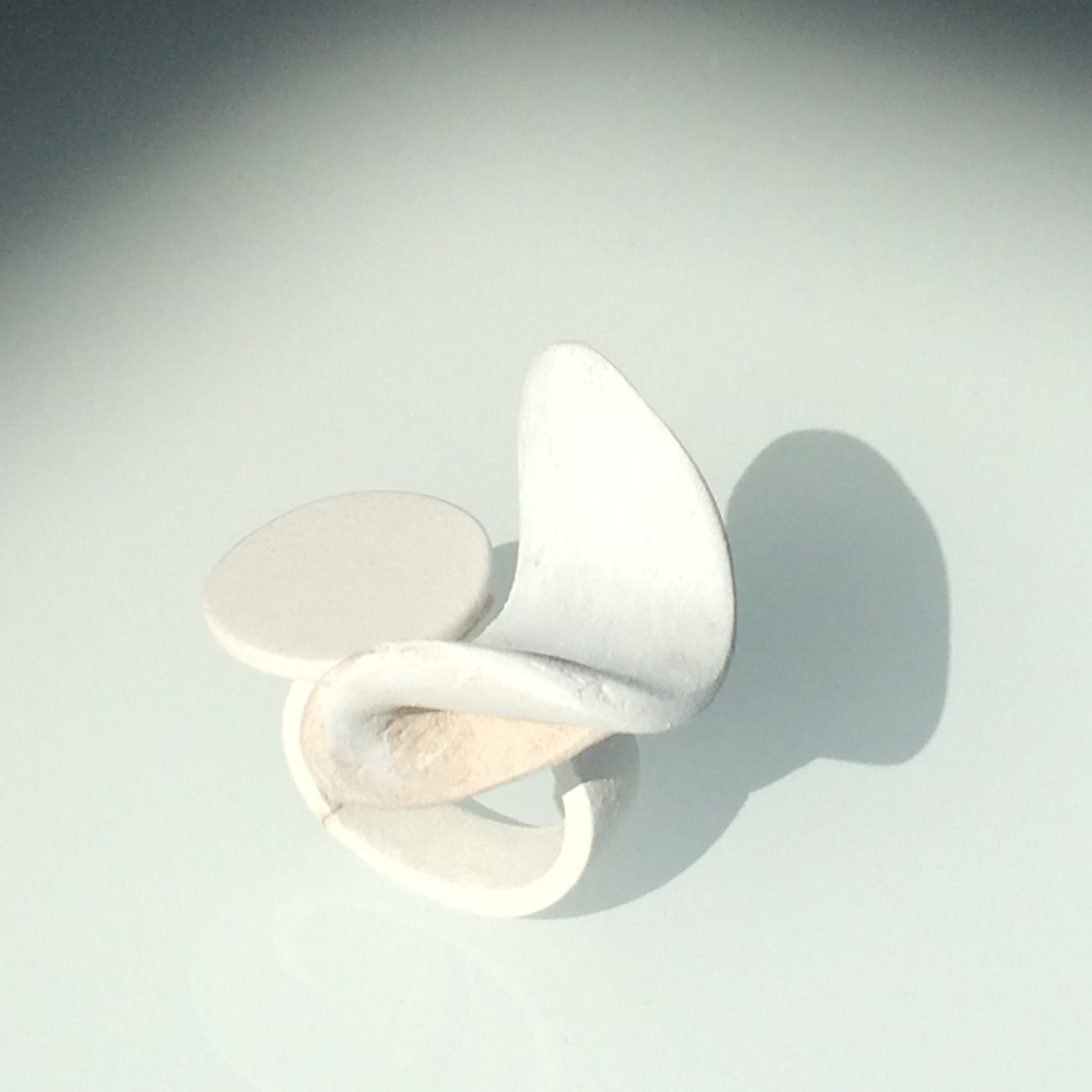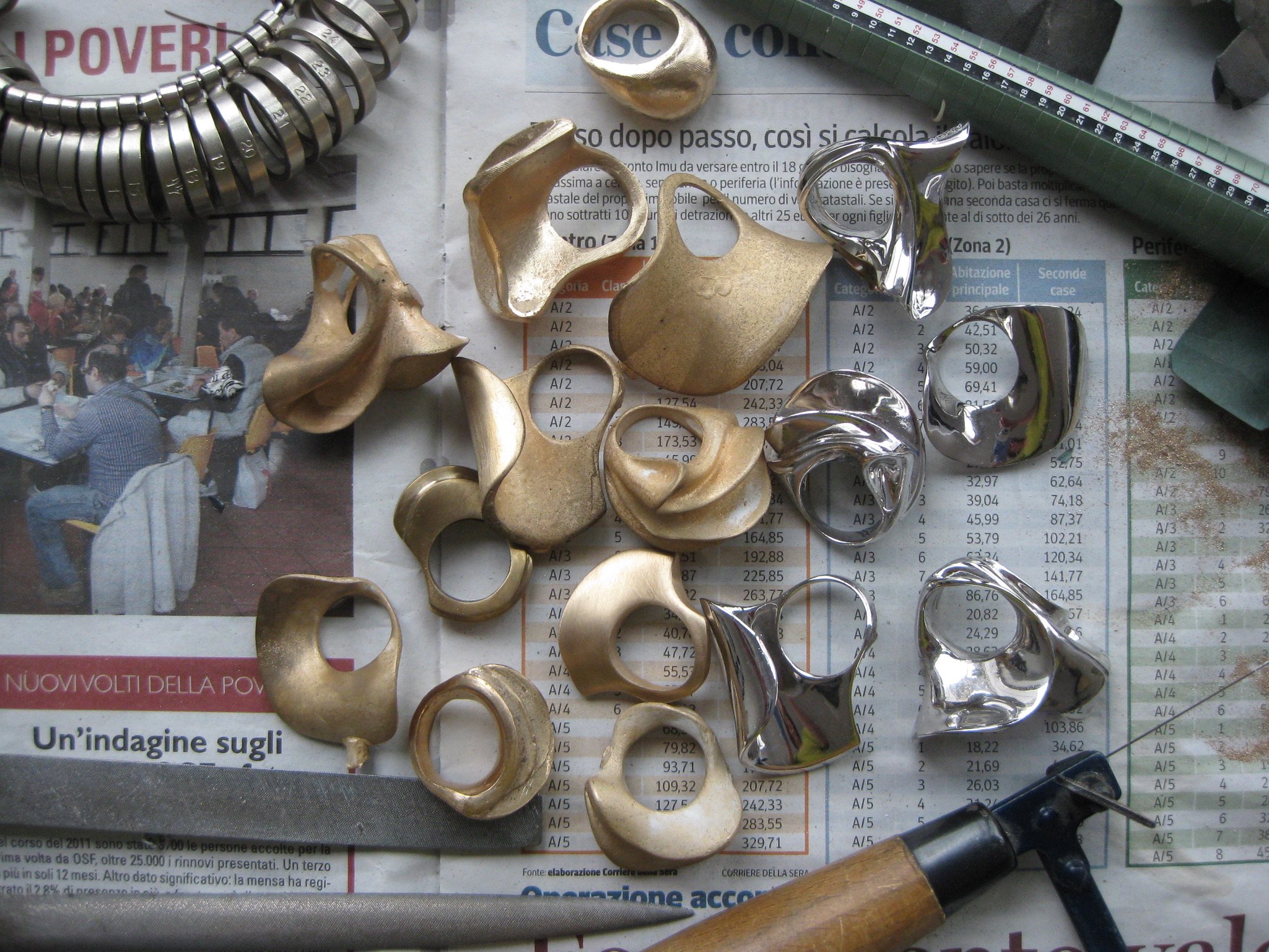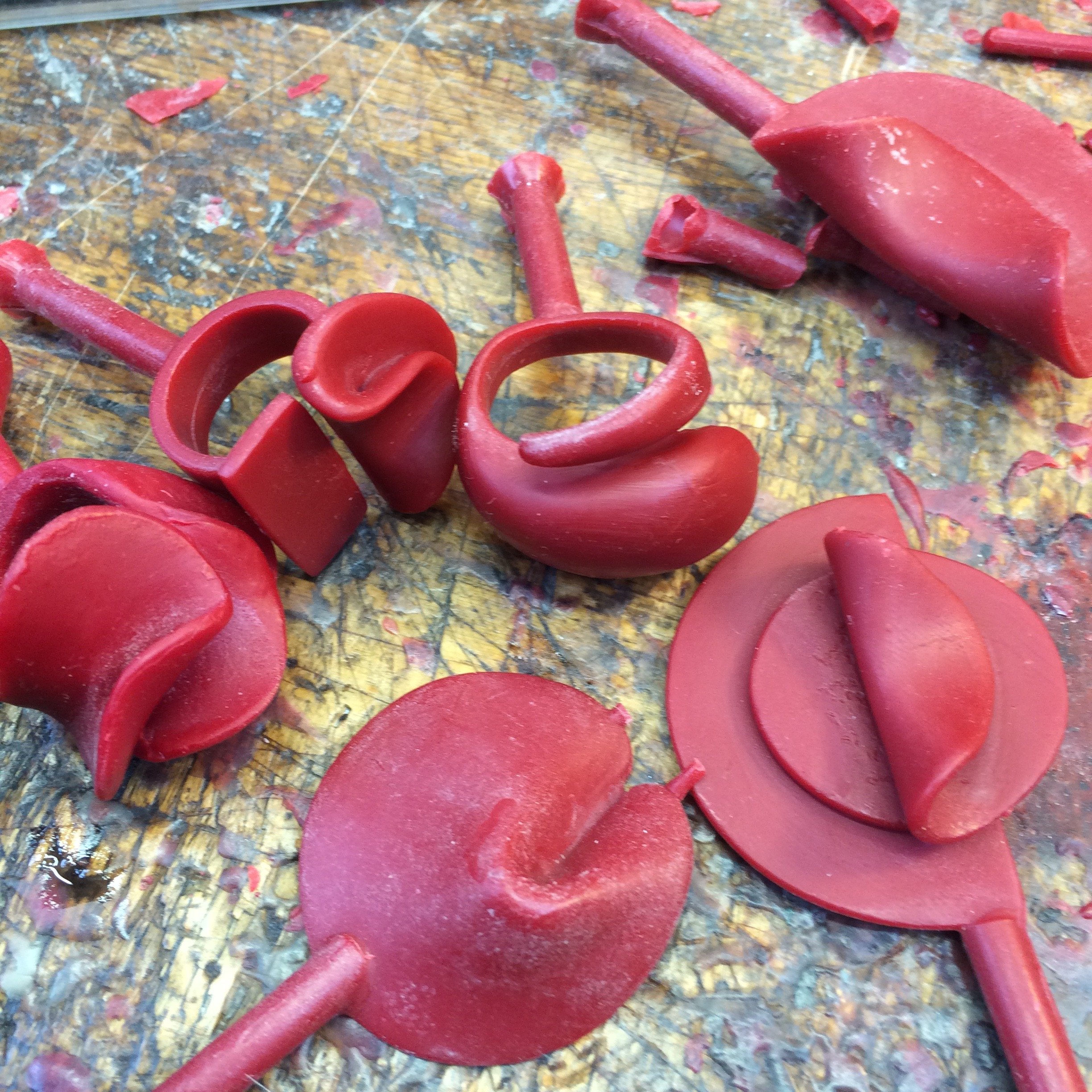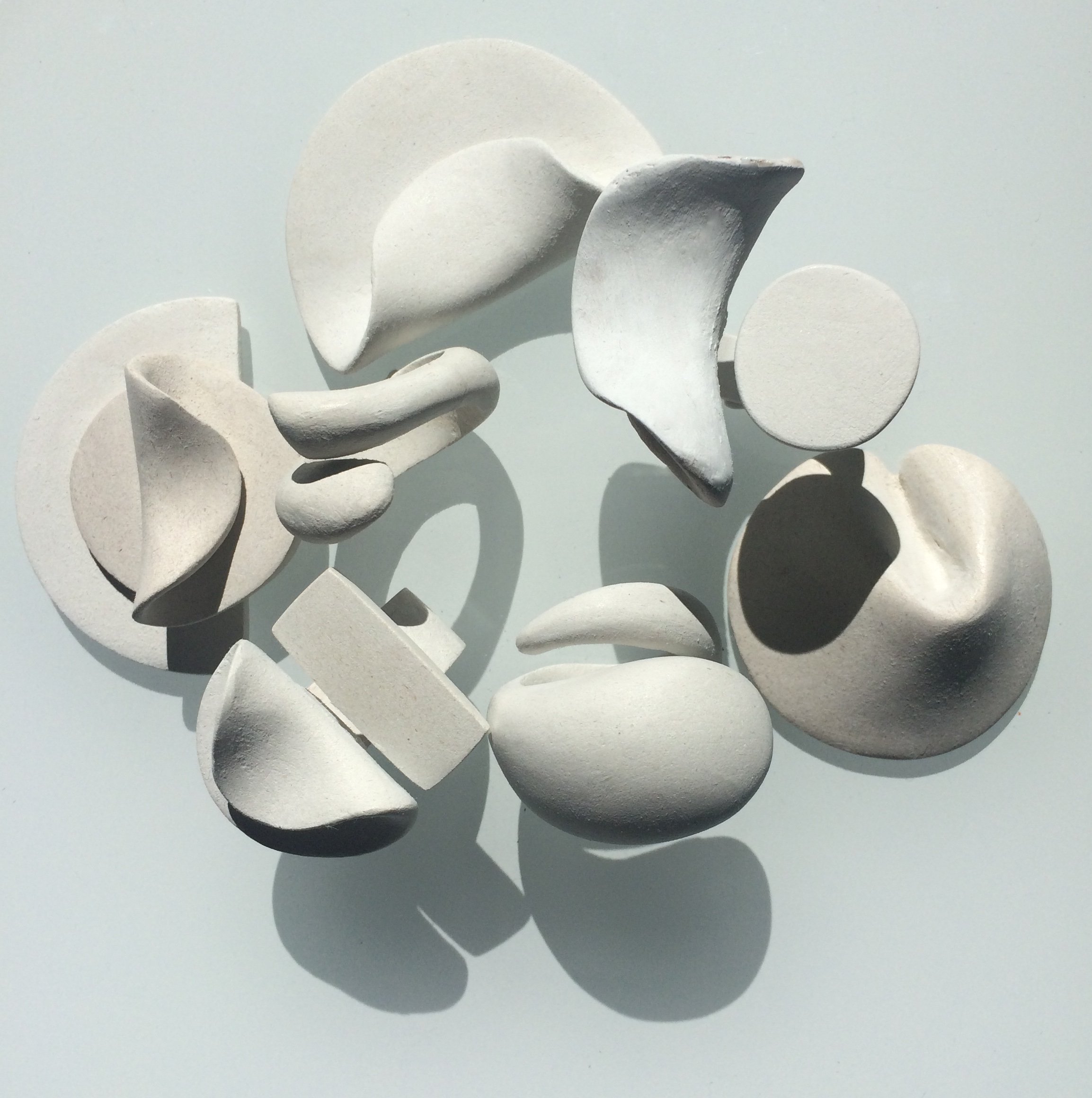About
Process
All pieces are the result of exploring the flexibility and sculptural nature of clay. The material is initially folded and shaped into a rough outline of the desired form and then left to dry. Once hardened it is filed and sanded to create softer and finer details until it sits comfortably on the finger while maintaining a visual complexity and boldness.
A silicone mould is made from the finished clay piece, which in turn is used to make a wax model for investment casting in metal.
The bends and folds add an aesthetic softness that result in striking pieces that are comfortable to wear.
Hallmarking
Why is hallmarking important?
Hallmarking provides official information and certainty about the piece of jewellery you are buying. A hallmark will include information about the type of metal, the jeweller’s identification mark and the logo of the assay office responsible for hallmarking.
Tabitha Sowden jewellery is made in Portugal and each piece is hallmarked by the Lisbon assay office.
About Tabitha
Tabitha was born in the UK, grew up in Italy, and lived in many different countries, including Germany and Brazil, until she fell in love with Portugal and decided to call Lisbon home.
Sculpture has always been one of her great passions and with her jewellery she has managed to combine craftsmanship with sculptural techniques, resulting in timeless statement pieces.
Tabitha first started making jewellery in Brazil using locally sourced materials such as wood, coconut shells, and soapstone. She later studied Jewellery & Silversmithing at the Sir John Cass Faculty of Art and Design.
Gallery
